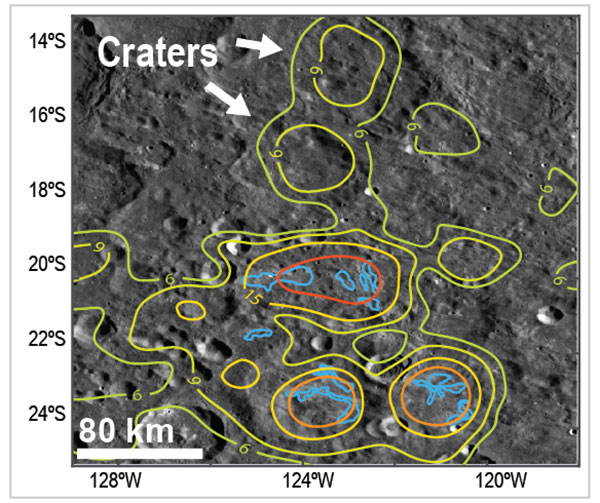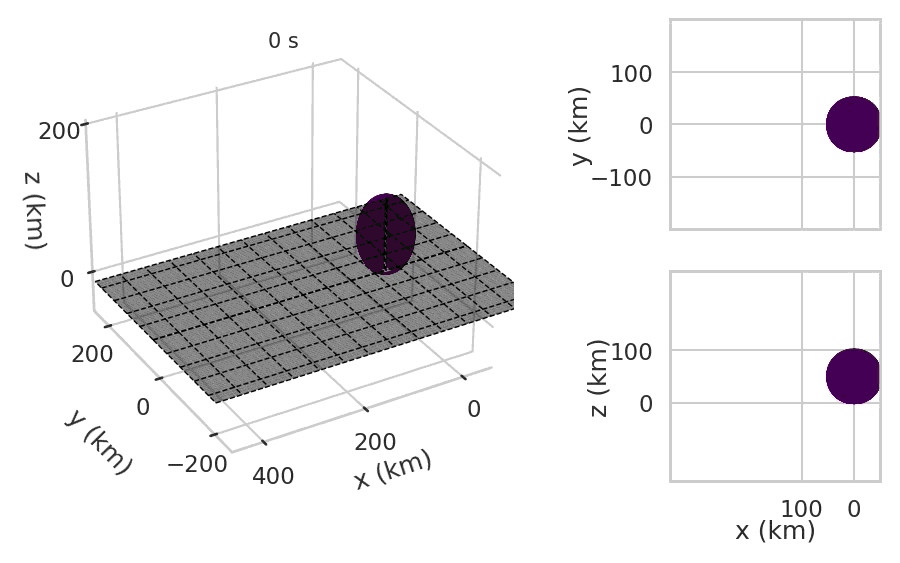
Key research finding
The moon has no core dynamo magnetic field, but spacecraft detect numerous strong localized magnetic fields in the crust of the moon. Many of these magnetic anomalies are antipodal to large impact basins. Scientists at Purdue University and the University of California, Santa Cruz, led by Brandon Johnson, Purdue associate professor of earth, atmospheric, and planetary sciences, ran impact simulations that showed that during oblique impact, ejected material piles up at the impact antipode. This antipodal ejecta may be several-hundred meters thick. Much of this ejecta is impactor material, which may contain iron or other minerals that can become magnetized. The authors found that this material is heated by the impact shockwave and remains warm enough to cool after it lands and records the moon's ancient magnetic field. Using the strength of these anomalies and the calculated abundance of impactor material, they found that the moon's magnetic field had a strength of 40-73 μT at the time large impact basins were forming about 4 billion years ago.
 When something hits the moon at an oblique angle, ejected material - including pieces of the impactor, which may contain iron ore or other magnetic metals - accumulates on the opposite side of the moon. This accumulation, which may be several-hundred meters thick, records the strength of the moon's magnetic field at the time of impact, allowing researchers a glimpse into the moon's magnetic past. (Purdue University image/ Shigeru Wakita)
When something hits the moon at an oblique angle, ejected material - including pieces of the impactor, which may contain iron ore or other magnetic metals - accumulates on the opposite side of the moon. This accumulation, which may be several-hundred meters thick, records the strength of the moon's magnetic field at the time of impact, allowing researchers a glimpse into the moon's magnetic past. (Purdue University image/ Shigeru Wakita) Purdue professor's expertise
Brandon Johnson, associate professor in Purdue University's Department of Earth, Atmospheric, and Planetary Sciences, is an expert on impact cratering, one of the most pervasive geologic processes in the solar system. First author is Shigeru Wakita, Johnson's former postdoctoral researcher.
Journal name
Nature Communications. The paper is available online.
Funding
This research was supported in part through computational resources provided by ITaP (Information Technology at Purdue), West Lafayette, Indiana. I.G.B. acknowledges support from the NASA Lunar Data Analysis program and the BK21 plus program funded through the National Research Foundation, funded by the Ministry of Education of Korea. T.M.D. was funded by STFC grant ST/S000615/1.

Brief summary of methods
The team simulated basin-forming impacts to track material ejected far from the point of impact. They calculated that the trajectory of this ejecta determines where it lands with a focus on the distribution around the antipode of the impact (opposite side of the moon). They also calculated the temperature and composition of this antipodal ejecta to determine if this antipodal ejecta can record the ancient lunar magnetic field.






